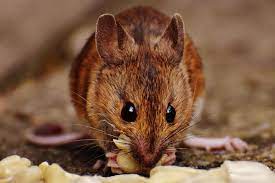In the realms of nature and our everyday lives, mice emerge as tiny yet incredibly interesting creatures. Join us on a journey as we uncover 29 captivating facts that shed light on the often underestimated world of mice, showcasing their remarkable behaviors, adaptations, and roles in ecosystems.

1. Ubiquitous Presence: Found on every continent except Antarctica, mice are among the most widespread mammals on Earth.
2. Diverse Species: With over 1,500 species, mice exhibit an astonishing diversity in size, color, and habits.
3. Adaptation Masters: Mice can adapt to various environments, from grasslands to forests and urban areas, thriving in diverse conditions.
4. Commensal Species: Some mice species have forged a close relationship with humans, living in close proximity to human settlements.
5. Rapid Reproduction: Known for their rapid breeding cycle, a single pair of mice can produce dozens of offspring in a year.
6. Keen Senses: Mice possess excellent senses of hearing, smell, and touch, allowing them to navigate their surroundings adeptly.
7. Social Structures: Certain species exhibit complex social structures, with hierarchical relationships and intricate communication.
8. Exceptional Communicators: Mice communicate through a combination of vocalizations, body language, and pheromones.
9. Lifespan Variations: Lifespan ranges from 1 to 3 years, influenced by factors such as species, habitat, and predation.
10. Ecosystem Engineers: Mice play crucial roles as seed dispersers, soil aerators, and prey for various predators.
11. Niche Occupiers: Their ecological niches range from burrowing to climbing, showcasing their adaptability.
12. Dietary Preferences: Mice exhibit diverse diets, consuming everything from seeds and fruits to insects and even small vertebrates.
13. Nocturnal Habits: Most mice are nocturnal, which helps them avoid predators while actively foraging during the night.
14. Reproductive Strategies: Female mice exhibit delayed implantation, allowing them to time their pregnancies with favorable conditions.
15. Color Camouflage: Mice species living in different environments display distinct coat colors to blend with their surroundings.
16. Playful Behavior: Young mice engage in playful behaviors that serve as important developmental exercises.
17. Complex Nests: Mice construct intricate nests from materials like leaves, grass, fur, and feathers.
18. Medical Significance: Mice are extensively used in medical research, contributing to advancements in various fields.
19. Rapid Learners: Mice are known for their ability to learn and adapt quickly to changes in their environment.
20. Furry Architects: Burrowing mice species play a significant role in soil turnover and nutrient cycling.
21. Predation Dynamics: Mice are both predators and prey, impacting the delicate balance of ecosystems.
22. Cultural Symbolism: Mice are depicted in various cultural contexts, symbolizing everything from resourcefulness to innocence.
23. Sensitive Whiskers: Whiskers, or vibrissae, help mice navigate in the dark and sense changes in their surroundings.
24. Dental Peculiarities: Mice have continuously growing teeth, necessitating constant gnawing to prevent overgrowth.
25. Efficient Breathers: Mice have a high respiratory rate, allowing them to take in more oxygen and survive in low-oxygen environments.
26. Nutrient Contributors: By feeding on plant matter and small invertebrates, mice contribute to nutrient cycling in ecosystems.
27. Energy Reserves: Mice store energy in the form of fat reserves, helping them survive periods of food scarcity.
28. Disease Vectors: Some mice species can transmit diseases to humans, highlighting the importance of proper hygiene.
29. Environmental Indicators: Changes in mouse populations can serve as indicators of ecosystem health and habitat quality.
Embark on a captivating journey of discovery as we delve into the diverse and often surprising world of mice, uncovering their hidden roles and significance.



















Add Comment